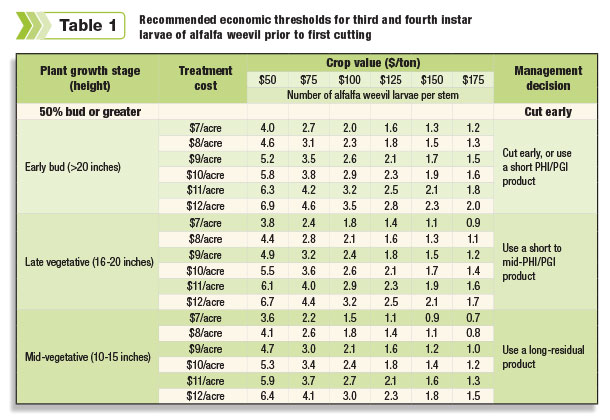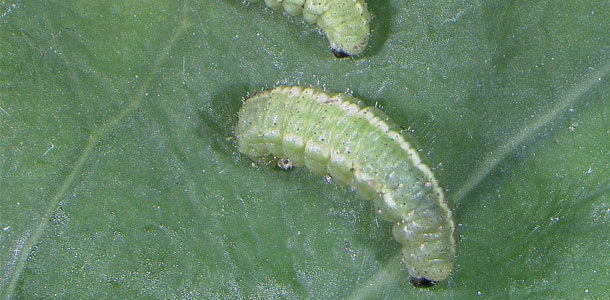However, producers can effectively manage alfalfa weevils by following two easy steps.
First, monitor fields early before adult emergence of alfalfa weevil occurs at 300 degree days using a base of 48ºF from Jan. 1. With the cold winter of 2013-2014 and cool spring, alfalfa weevil emergence will be delayed this year.
Any eggs laid last fall will experience high mortality in some areas since they usually only survive during milder winters in the northern states.
Next, use the economic thresholds for alfalfa weevils and select practical integrated pest management (IPM) strategies that will help maximize profits and minimize the use of insecticide (using only when needed).
Economic thresholds are based on alfalfa height, market value of alfalfa hay and number of alfalfa weevil larvae observed during scouting.
Scout fields by walking a W pattern and counting 30 stems per five stops. At each stop, record the alfalfa height in inches and number of alfalfa weevil larvae per 30 stems.
Clip 30 stems and shake stems into a bucket to dislodge larvae from alfalfa stems for counting. Alfalfa weevil larvae are about ⅜-inch long when mature, green with a white line down the center of the back and black head.

Calculate the average height of alfalfa and average number of alfalfa weevil larvae per stem. If the number of alfalfa weevil larvae are greater than the number listed in Table 1, early cutting or an insecticide are recommended to protect the alfalfa from weevil damage.
If alfalfa is close to the early bud stage, continued feeding by larvae may not be great enough to warrant the cost of insecticide application. Instead, early cutting (hay) is one of the best strategies for mitigating alfalfa weevil damage at this crop stage.
Alfalfa weevil larvae are very susceptible to desiccation after cutting, and this often results in more than 90 percent mortality of larvae. However, it is prudent to scout for larvae under the windrows just to be sure that any escaped larvae are not feeding in there.
If regrowth has more than eight larvae per square foot, or re-growth is delayed due to feeding, treatment is recommended. FG
Janet Knodel is an extension entomologist and associate professor with North Dakota State University.








